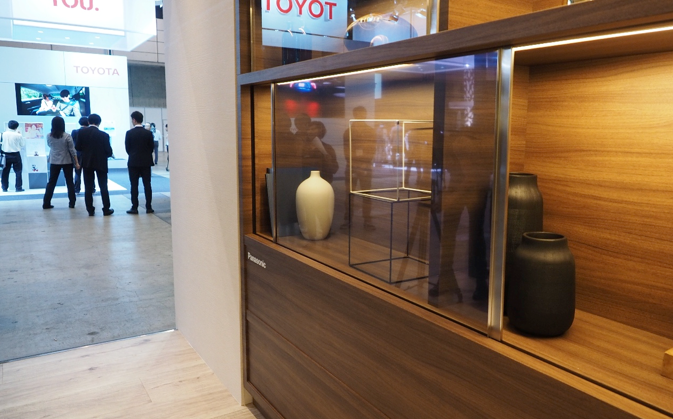
If you thought the leap from cathode tube to flat-screen panel was a radical shift in television design, the next iteration will is equally dramatic. Panasonic has just shown off what it’s calling “the future of display screens” at the CEATEC electronics expo in Japan this week, demonstrating a high-end OLED television that becomes indistinguishable from glass when the power switches off.
The prototype is a later iteration of the Osaka-based company’s first transparent panel, originally a LED screen. Unhappy with the transparency and brightness, Panasonic upgraded the display to OLED (organic light-emitting diode) technology, where each pixel is independently illuminated—rather than collectively illuminated with a back panel. Little is known of the screen’s actual inner workings, though Engadget’s Mat Smith mentions it’s composed of fine mesh embedded within a glass panel. This makes sense given that OLED panels typically feature a thin layer of plastic inserted between two electrodes on top of a glass slab, that way when the electric signal disappears, the slab appears virtually transparent. What’s more, OLED technology has very low power constraints, allowing the for much thinner panels than otherwise possible with LED or LCD-based technology.

Curious what the prototype looks like in action? Check out the Panasonic’s demo clip below to see the panel slide within a cabinet. Neat as this kind of arrangement appears at first glance, the question that ultimately needs answering is whether or not you’re willing to sacrifice the full-on size of a traditional television for the novelty of a cabinet-television. Panasonic somewhat agrees and foresees people using the display to control smart home devices, play music, and act as a digital slideshow display.
Regardless of whether your disposable income permits such curiosities, Panasonic’s spokesperson explains that it’ll take another three years before a consumer version is complete.
Source: Engadget
Advertisement
Learn more about Electronic Products Magazine





